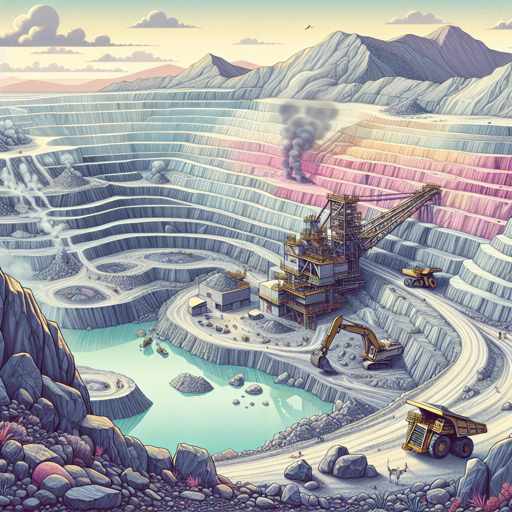Unveiling the Environmental Impact of Lithium Mining
A comprehensive exploration of the environmental consequences of lithium mining, a key component in the technology and electric vehicle revolution.

Unveiling the Environmental Impact of Lithium Mining
Introduction
Lithium, a key component in rechargeable batteries powering everything from cell phones to electric vehicles, is becoming a vital element in our modern world. Yet, few of us fully comprehend the environmental consequences of lithium extraction. This article aims to shed light on the often-overlooked environmental impacts of lithium mining.
Main Sections
The Lithium Boom
The demand for lithium-ion batteries has skyrocketed in recent years. The lithium mining industry has responded by increasing production, with lithium reserves estimated to be around 17 million tonnes worldwide. However, the environmental repercussions of this boom are significant.
Environmental Impacts of Lithium Mining
Extraction of lithium from mineral deposits and salar brines involves processes that can lead to air, water, and soil pollution. These include the release of chemicals in the refining process, the creation of vast amounts of waste rock, and the alteration of landscapes leading to habitat destruction.
Air Pollution
During lithium extraction, dust particles and chemical pollutants are released into the air, which can contribute to health problems in nearby communities and harm local ecosystems.
Water Pollution and Consumption
Lithium extraction, particularly from salar brines, is water-intensive. This can result in water scarcity in arid regions where lithium deposits are often found. Moreover, the brine extraction process can lead to the contamination of water bodies with chemicals such as boron or magnesium.
Soil Contamination
The removal of topsoil and the creation of waste rock during mining can lead to soil degradation. This can affect local agriculture and disrupt ecosystems.
The Need for Sustainable Practices
Given these environmental impacts, there is a growing call for more sustainable lithium mining practices. These include better water management, improved waste disposal, and a focus on minimizing the disruption to local ecosystems.
“We cannot solve our problems with the same thinking we used when we created them.” - Albert Einstein
| Environmental Impact | Description |
|---|---|
| Air Pollution | Dust and chemical pollutants from mining activities can harm human health and local ecosystems. |
| Water Pollution and Consumption | Lithium extraction, particularly from salar brines, can lead to water scarcity and water contamination. |
| Soil Contamination | Mining activities can lead to soil degradation, affecting local agriculture and ecosystems. |
The above table summarizes the key environmental impacts of lithium mining.
Conclusion
The environmental impacts of lithium mining are a stark reminder that even green technologies come at a cost. As our reliance on lithium-ion batteries continues to grow, it is crucial that we prioritize sustainable mining practices to minimize ecological damage and ensure a healthier planet for future generations.